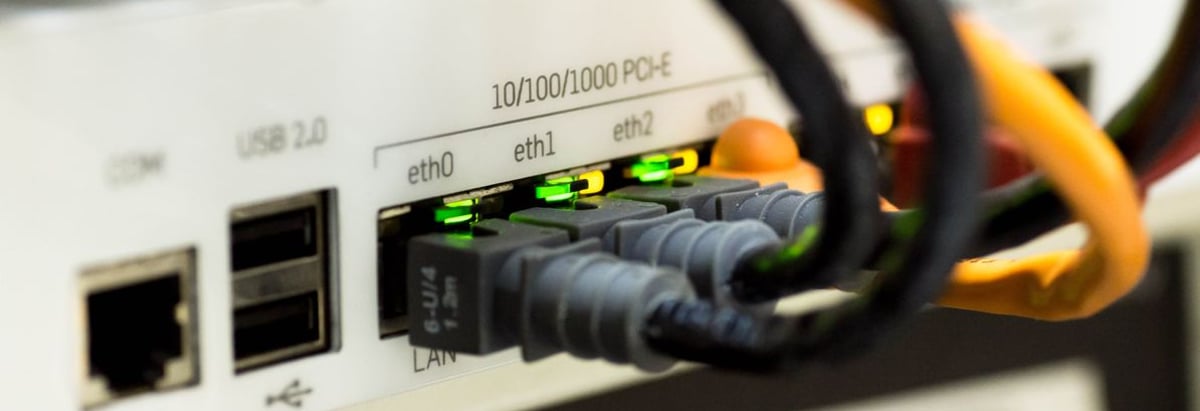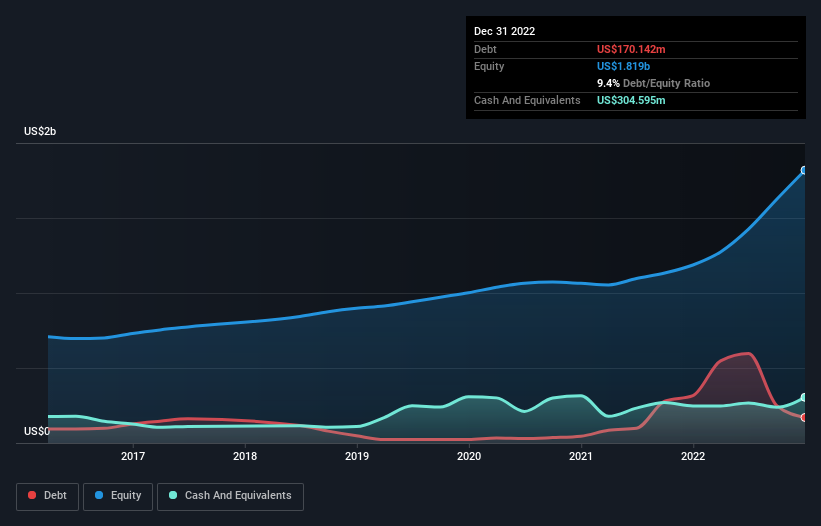- United States
- /
- Tech Hardware
- /
- NasdaqGS:SMCI
We Think Super Micro Computer (NASDAQ:SMCI) Can Stay On Top Of Its Debt

Howard Marks put it nicely when he said that, rather than worrying about share price volatility, 'The possibility of permanent loss is the risk I worry about... and every practical investor I know worries about.' When we think about how risky a company is, we always like to look at its use of debt, since debt overload can lead to ruin. Importantly, Super Micro Computer, Inc. (NASDAQ:SMCI) does carry debt. But is this debt a concern to shareholders?
What Risk Does Debt Bring?
Debt is a tool to help businesses grow, but if a business is incapable of paying off its lenders, then it exists at their mercy. Ultimately, if the company can't fulfill its legal obligations to repay debt, shareholders could walk away with nothing. However, a more usual (but still expensive) situation is where a company must dilute shareholders at a cheap share price simply to get debt under control. Of course, plenty of companies use debt to fund growth, without any negative consequences. When we examine debt levels, we first consider both cash and debt levels, together.
Check out our latest analysis for Super Micro Computer
What Is Super Micro Computer's Debt?
You can click the graphic below for the historical numbers, but it shows that Super Micro Computer had US$170.1m of debt in December 2022, down from US$315.9m, one year before. However, it does have US$304.6m in cash offsetting this, leading to net cash of US$134.5m.

A Look At Super Micro Computer's Liabilities
The latest balance sheet data shows that Super Micro Computer had liabilities of US$916.9m due within a year, and liabilities of US$339.2m falling due after that. On the other hand, it had cash of US$304.6m and US$901.2m worth of receivables due within a year. So its liabilities total US$50.3m more than the combination of its cash and short-term receivables.
This state of affairs indicates that Super Micro Computer's balance sheet looks quite solid, as its total liabilities are just about equal to its liquid assets. So while it's hard to imagine that the US$4.72b company is struggling for cash, we still think it's worth monitoring its balance sheet. While it does have liabilities worth noting, Super Micro Computer also has more cash than debt, so we're pretty confident it can manage its debt safely.
Even more impressive was the fact that Super Micro Computer grew its EBIT by 406% over twelve months. If maintained that growth will make the debt even more manageable in the years ahead. The balance sheet is clearly the area to focus on when you are analysing debt. But it is future earnings, more than anything, that will determine Super Micro Computer's ability to maintain a healthy balance sheet going forward. So if you want to see what the professionals think, you might find this free report on analyst profit forecasts to be interesting.
Finally, a company can only pay off debt with cold hard cash, not accounting profits. While Super Micro Computer has net cash on its balance sheet, it's still worth taking a look at its ability to convert earnings before interest and tax (EBIT) to free cash flow, to help us understand how quickly it is building (or eroding) that cash balance. Considering the last three years, Super Micro Computer actually recorded a cash outflow, overall. Debt is far more risky for companies with unreliable free cash flow, so shareholders should be hoping that the past expenditure will produce free cash flow in the future.
Summing Up
We could understand if investors are concerned about Super Micro Computer's liabilities, but we can be reassured by the fact it has has net cash of US$134.5m. And we liked the look of last year's 406% year-on-year EBIT growth. So we don't have any problem with Super Micro Computer's use of debt. The balance sheet is clearly the area to focus on when you are analysing debt. But ultimately, every company can contain risks that exist outside of the balance sheet. For instance, we've identified 4 warning signs for Super Micro Computer (2 can't be ignored) you should be aware of.
When all is said and done, sometimes its easier to focus on companies that don't even need debt. Readers can access a list of growth stocks with zero net debt 100% free, right now.
New: Manage All Your Stock Portfolios in One Place
We've created the ultimate portfolio companion for stock investors, and it's free.
• Connect an unlimited number of Portfolios and see your total in one currency
• Be alerted to new Warning Signs or Risks via email or mobile
• Track the Fair Value of your stocks
Have feedback on this article? Concerned about the content? Get in touch with us directly. Alternatively, email editorial-team (at) simplywallst.com.
This article by Simply Wall St is general in nature. We provide commentary based on historical data and analyst forecasts only using an unbiased methodology and our articles are not intended to be financial advice. It does not constitute a recommendation to buy or sell any stock, and does not take account of your objectives, or your financial situation. We aim to bring you long-term focused analysis driven by fundamental data. Note that our analysis may not factor in the latest price-sensitive company announcements or qualitative material. Simply Wall St has no position in any stocks mentioned.
About NasdaqGS:SMCI
Super Micro Computer
Develops and sells high performance server and storage solutions based on modular and open architecture in the United States, Europe, Asia, and internationally.
Exceptional growth potential and undervalued.
Similar Companies
Market Insights
Community Narratives



